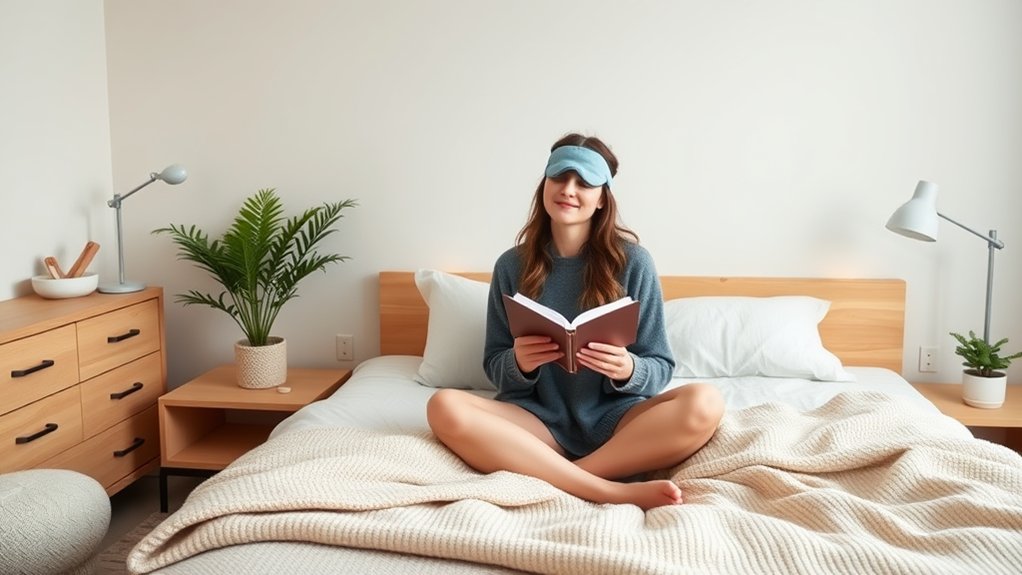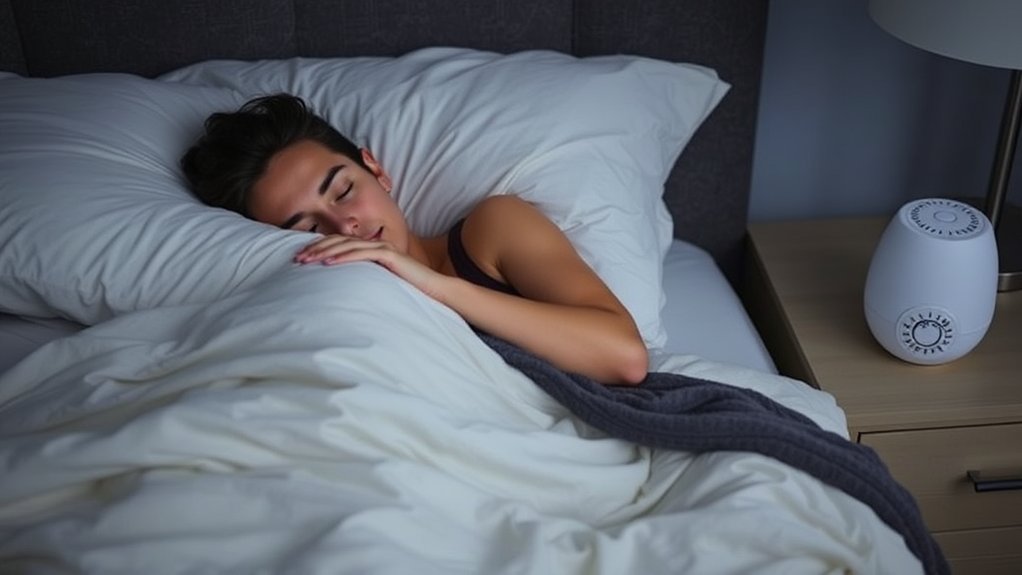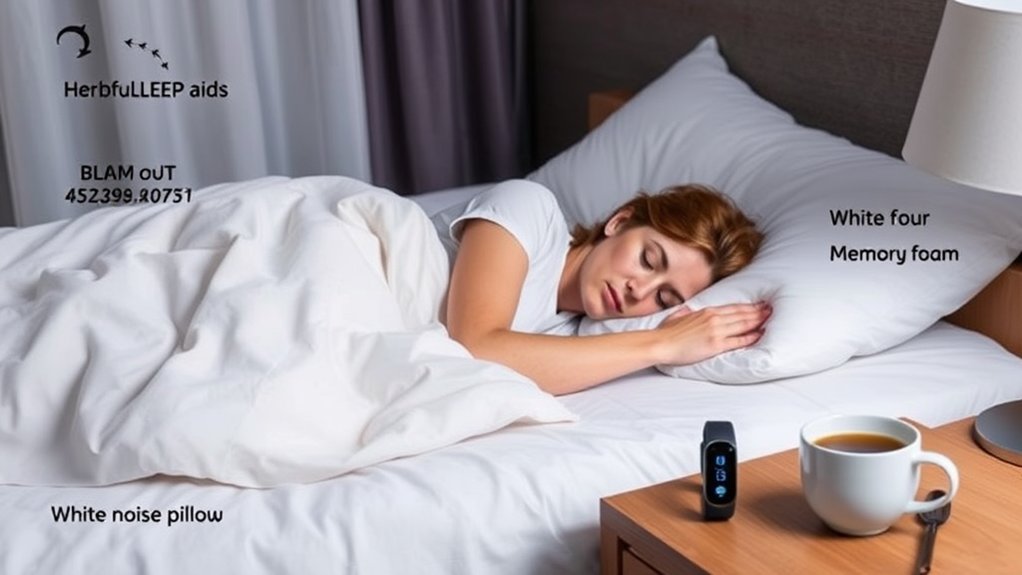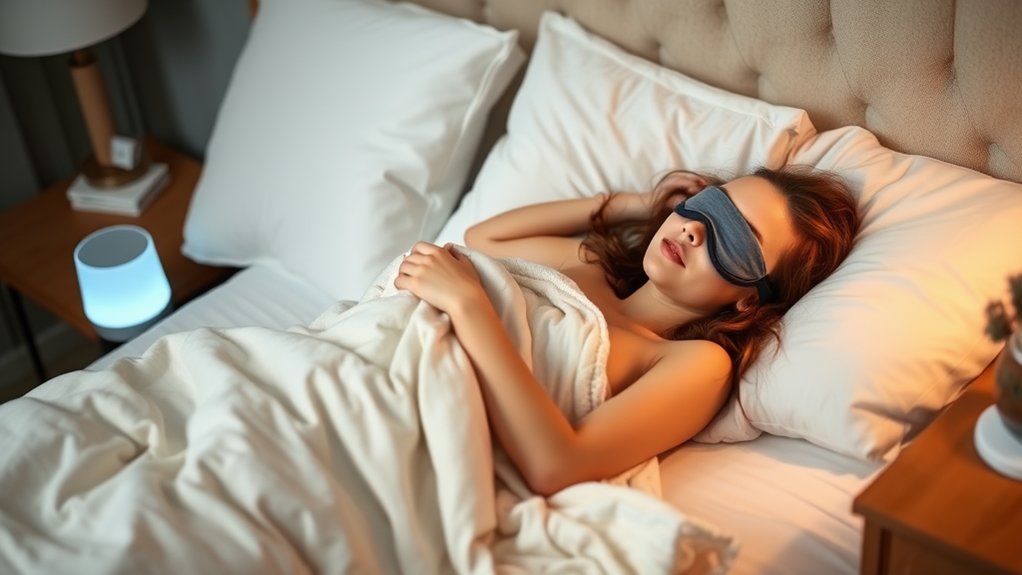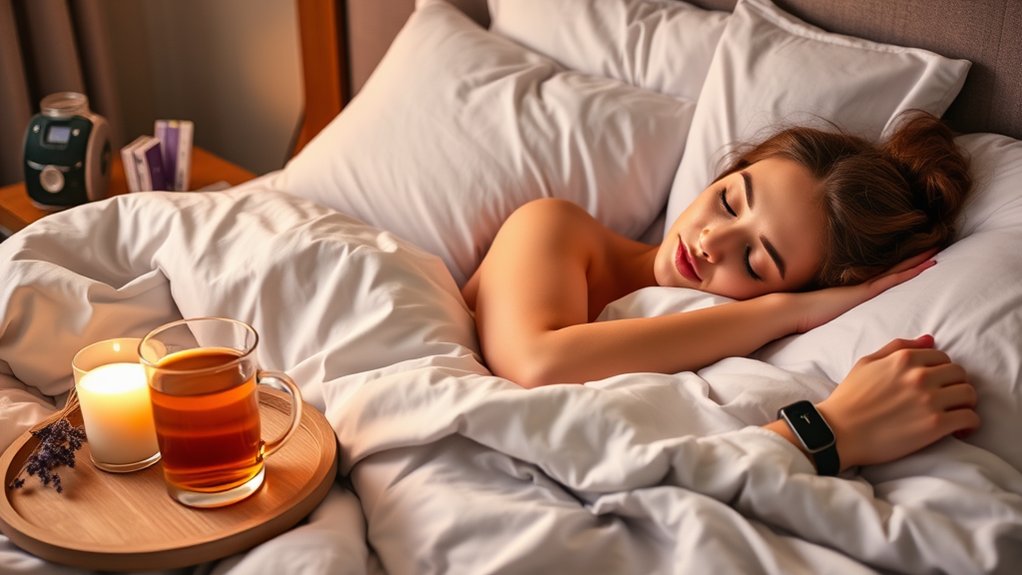7 Sleep Maintenance Insomnia Treatments That Work
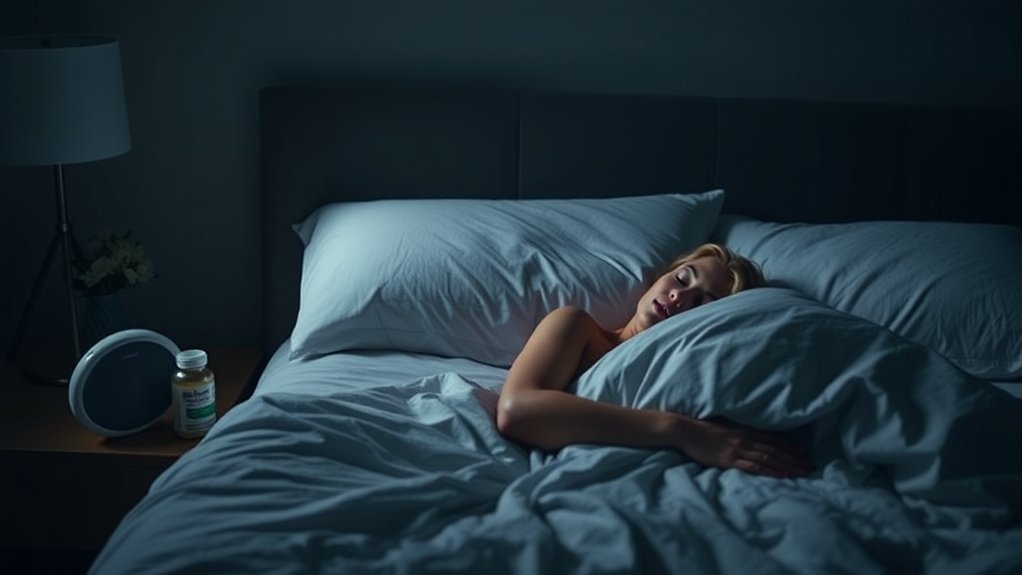
Tossing and turning all night, feeling like a lifeless zombie during the day? You’re not alone, but these seven proven insomnia treatments can get your sleep back on track. From cognitive behavioral therapy to bright light therapy, there’s an option to fit your needs and lifestyle. Pair these with better sleep hygiene, and you’ll finally be catching those elusive Z’s. Want the juicy details on how each one works? Keep reading.
Cognitive Behavioral Therapy for Insomnia (CBT-I)
While there are a variety of treatments available for sleep maintenance insomnia, one of the most effective and well-researched options is Cognitive Behavioral Therapy for Insomnia (CBT-I).
This bad boy of insomnia treatments tackles the problem head-on by addressing the thoughts and behaviors that contribute to your shitty sleep.
Through a series of sessions, you’ll learn techniques to control your racing mind, create a sleep-friendly environment, and develop healthier bedtime habits.
No more tossing and turning for hours on end – CBT-I can help you get the quality shuteye you desperately need.
It’s not a quick fix, but the long-term benefits are well worth the effort.
Relaxation Techniques
Alright, so you’ve been busting your ass trying CBT-I to kick your sleep problems to the curb, but sometimes you just need to kick back and chill the fuck out.
That’s where relaxation techniques come in handy, my friend. Imagine this: you’re lying in bed, eyes closed, every muscle in your body as loose as a noodle. Sounds pretty sweet, doesn’t it?
Try these bad boys on for size:
- Progressive muscle relaxation: Tense and release each muscle group, starting from your toes and working your way up.
- Deep breathing: Breathe in through your nose, hold it, then slowly exhale through your mouth. Repeat until you feel like a zen master.
- Visualization: Picture a serene, calming scene, like a beach or a forest. Let your mind wander and your body follow.
- Mindfulness meditation: Focus on the present moment, letting thoughts come and go without judgment.
Sleep Restriction Therapy
If you’ve already given CBT-I your best shot but you’re still tossing and turning like a fish out of water, it might be time to try sleep restriction therapy. This no-nonsense approach literally restricts the amount of time you spend in bed, forcing your body to get its act together and sleep more efficiently. Sounds counterintuitive, right? But trust us, it works.
| Pros | Cons |
|---|---|
| Increases sleep drive and efficiency | Can be challenging initially |
| Boosts sleep quality | May cause increased daytime sleepiness |
| Helps reset your sleep-wake cycle | Requires commitment and consistency |
| Reduces time spent awake in bed | Needs close monitoring by a professional |
Bright Light Therapy
Bright light therapy is like a jump-start for your sleep-wake cycle. It’s a friggin’ bright light bulb that can work wonders for your insomnia.
Here’s how it goes down:
- You sit your ass in front of a special light box for 30 minutes each morning.
- The bright light signals your brain to stop producing melatonin, the sleep-inducing hormone.
- This resets your internal clock, making it easier to fall asleep and stay asleep at night.
- Boom! No more tossing and turning until the crack of dawn.
Sure, it takes some discipline, but it beats popping sleeping pills like candy.
Give it a shot, and you might just get the best darn sleep of your life.
Medication Management
While popping sleeping pills like candy might seem like an easy fix, medication management for sleep maintenance insomnia is a whole different ballgame.
Sure, prescription meds can knock you out, but they come with a truckload of nasty side effects that make you feel like a zombie the next day. Not to mention the risk of dependency and withdrawal. Oof, no thanks!
Doctors have to walk a fine line, carefully weighing the pros and cons before prescribing anything. They’ll likely start low and slow, constantly monitoring your response and adjusting the dosage as needed.
It’s all about finding the sweet spot – enough to help you snooze, but not so much that you wake up drooling and disoriented. Doesn’t sound too fun, does it?
Welcome to the wild world of sleep meds, my friend.
Improving Sleep Hygiene
You know, when it comes to sleep maintenance insomnia, popping those sleeping pills isn’t the only solution.
In fact, there are some simple lifestyle tweaks that can do wonders for your sleep quality. For starters, try these four sleep hygiene hacks:
- Ditch the blue light – that means no scrolling through your phone or laptop right before bed. The blue wavelengths in these devices can mess with your circadian rhythm.
- Create a sleep-friendly environment – keep your bedroom cool, dark, and quiet. Invest in some blackout curtains and earplugs if needed.
- Establish a consistent sleep schedule – going to bed and waking up at the same time every day can help regulate your body’s internal clock.
- Avoid caffeine and alcohol close to bedtime – they may help you doze off initially, but they can disrupt your sleep later on.
Mindfulness-Based Interventions
Alright, let’s move on from those basic sleep hygiene tips and talk about something a little more out-there – mindfulness-based interventions. These woo-woo techniques might seem a bit weird, but the research shows they can actually be super effective for treating sleep maintenance insomnia. We’re talking things like meditation, deep breathing, and even yoga. Sounds kinda out there, right? But hey, if sitting your butt down and focusing on your breathing for 20 minutes a day can help you sleep like a baby, why the hell not, right?
Check out this table that breaks down the key benefits of mindfulness-based interventions:
| Benefit | Description |
|---|---|
| Stress Reduction | Mindfulness helps you chill the f*ck out and let go of the day’s worries so you can fall asleep faster. |
| Improved Focus | These practices train your brain to stay present, making it easier to shut off the inner monologue at bedtime. |
| Enhanced Relaxation | Techniques like meditation and yoga trigger the relaxation response, melting away muscle tension and priming you for sleep. |
| Reduced Rumination | Mindfulness breaks the cycle of obsessive, anxious thoughts that can keep you tossing and turning all night long. |
Final Thoughts
Getting some shuteye can be a real pain in the you-know-what, but fear not, my sleep-deprived friend! These seven tried-and-true treatments will have you counting sheep like a pro in no time. Whether you’re a stress-case, a night owl, or just plain restless, there’s an option here that’ll have you snoozing like a baby in no time.
As you explore these methods, remember that finding emotional safety and addressing stress can be pivotal to your sleep journey. For those seeking a deeper connection to their nighttime wellness, the ‘Sleep Return’ program offers a unique, trauma-informed approach to healing your nervous system and nurturing restful nights. It’s a gentle invitation to embark on a supportive path towards better sleep, helping you soothe nighttime anxiety and restore your natural rhythms. Sweet dreams, baby!


